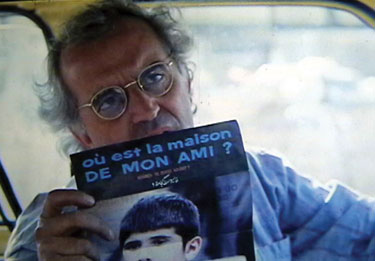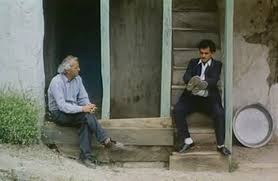Phurba Tasha Sherpa has summited (i.e. climbed to the peak of) Mt Everest 22 times. The Sherpas are a Nepali ethnic group who provide porters and guides for the Everest-climbing industry, a major branch of Nepali tourism. Climbing Mt Everest was a man-on-the-moon achievement when Tenzing Sherpa and Sir Edmund Hillary were the first to reach the peak in 1953, but since then more than 4000 people have summited successfully and more than 250 people are known to have died in the attempt.
Jennifer Peedom, who had already made short documentaries about Everest, set out to make a film about Phurba’s record-breaking twenty-third climb, while showing the Sherpa’s economic dependency on this hazardous venture and their economic exploitation by the tour companies and the Nepali government.
Each adventure-tourist pays upward of $60,000 to climb the mountain, and the Sherpas are paid $5000 for the two-month climbing season. In the 2013 season there was a violent clash between climbers and Sherpas triggered by a climber abusing a Sherpa, but clearly reflecting deeper tensions. Peedom says her decision to make Sherpa was in response to this event.
The Sherpas carry massive loads each season to establish the Base Camp and then carry more loads up the Khumbu Icefall to set up Camp 1. The Icefall is a steep slope of big ice chunks with large gaps that have to be crossed using aluminium ladders.
It is difficult and dangerous; time-lapse photography reveals that the Icefall is in fact an ice river flowing slowly down the mountain. The climb is gruelling, nerve-wracking and occasionally fatal. In any climbing season Sherpas carry heavy loads and guide climbers up the Icefall as much as thirty times.
Peedom presents many viewpoints in the film – tour managers, climbers, and Sherpas – but we are clearly led to take the Sherpas’ viewpoint, and there is a fundamental disjunction between their view of the mountain and the climbers’. The Buddhist Sherpas call Everest “Chomolungma” (Mother of the World). The same mountain they venerate is regarded by the climbers as a personal challenge, something to be “conquered”. One climber making his second attempt to summit speaks of wanting to create a “legacy” for his grandchildren.
One shot of a long line of climbers shuffling up the mountain recalled to me a similar ant-like line of tourists climbing Uluru, “conquering” a rock that is sacred to the local indigenous people, an enterprise that is likewise not without its dangers.
Whether in search of a legacy, bragging rights or a dramatic selfie, modern climbers don’t have to endure the same privations experienced by Hillary and Tenzing. The Sherpas lug a flat-screen TV up to Base Camp, and each morning wake the climbers in their tents with hot towels and tea.
Peedom set out to make a post-colonialist documentary, respectful to the Sherpas, with mildly satirical attitude to the climbers and apparently, from the early shooting, not critical of the tour operators. Everest itself was to be the true star, beautifully photographed by Renan Ozturk. Then something happened that radically altered the film’s direction.
A massive block of ice broke off and fell on a party climbing the Icefall, killing sixteen Sherpas. The bodies were brought down, some by helicopter, but in the aftermath the jolly little village that is the base camp falls apart. The Sherpas hold a meeting; they want to abandon the season out of respect for the dead, and they also protest their working conditions. The tour operators want the season to continue and claim that some Sherpas are forcing the others to refuse to climb with threats of breaking their legs. This story gets traction with some climbers, who see it as a form of terrorism. Phurba tells Peedom that he’s not aware of any such threat. Tibetan government officials fly in to address the Sherpas, expressing their sympathy and urging the Sherpas to get back to work. They carefully make no promises in what is plainly an attempt to protect the substantial government income threatened by the abandonment of the season.
One climber, indignant at losing his expensive chance to conquer something vey big, asks of the Sherpas, “Who owns them?” A question worth reflecting upon.





